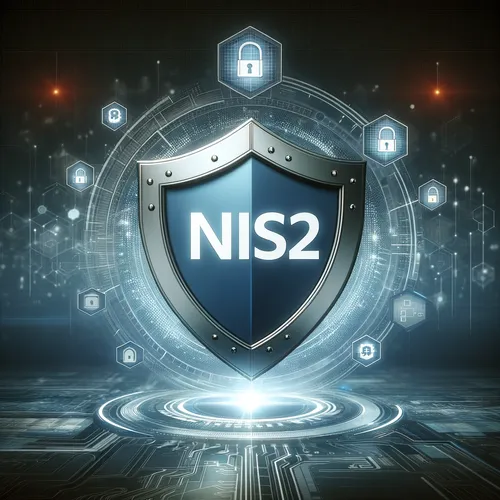
Knowledge base
January 15, 2024
The NIS2 Directive: What Does It Mean for Your Organization?
In our rapidly evolving digital world, where new challenges and risks are constantly lurking, the European Union’s introduction of the Network and Information Security (NIS2) Directive marks a crucial step in strengthening our digital and economic resilience.🛡️
The Essence of NIS2 🌟
The successor to the first NIS directive, NIS2, seeks to harmonize cybersecurity standards within Europe, significantly increasing the security of our network and information systems against cyber threats. This harmonization is vital in an era when cyber threats are an ever-growing risk to both our society and our economy. 🇪🇺🔒
Impact and Preparation 🎯
With NIS2 on the horizon, more industries and organizations will have to adhere to a higher standard of cybersecurity measures. This means not only implementing security measures but also reporting incidents. Early 2024 is a crucial time for organizations to begin preparations, as more details about the specific requirements will be revealed. This is also the time for an interactive consultation, allowing your organization to actively participate in shaping the future of our digital security.
Taking Action: A Proactive Approach 🏃♂️💨
Waiting is not an option. Start preparing your organization for the NIS2 directive today by conducting a comprehensive risk analysis. Identify digital threats and vulnerabilities, then develop robust protection strategies. Ensure robust business continuity plans and crisis management protocols, and implement effective response and recovery procedures to ensure a resilient future.
The core areas of NIS2
The following is an explanation of the core areas the NIS2 guideline focuses on with respect to controls:
1. Risk management processes 🎯
NIS2 requires organizations to implement appropriate and proportionate technical and organizational measures to manage network and information system security risks. This includes conducting regular risk assessments and implementing measures to mitigate these risks.
2. Securing Network and Information Systems 🔒
Organizations must ensure the security of the network and information systems they use. This includes the protection of hardware and software, as well as the data being processed and stored. Measures should be aimed at preventing incidents and limiting their impact.
3. Incident management 🚨
The NIS2 directive requires organizations to have procedures for incident detection, analysis and response. This includes the ability to identify, classify and respond to incidents, as well as restore normal business operations after an incident.
4. Incident Reporting Requirements 📢
Essential and important entities must report certain types of cybersecurity incidents to relevant national authorities. This obligation ensures that there is an overview of the cyber threats facing the EU and that a rapid response can be made to prevent further damage.
5. Supply Chain Security ⛓️
NIS2 emphasizes supply chain security and requires organizations to assess and manage the risks arising from their reliance on external suppliers. This means that suppliers are expected to meet certain security standards as well.
6. Safety audits and tests 🕵️♂️
It requires organizations to conduct regular audits and tests to assess the effectiveness of their security measures. This can include internal audits as well as external testing such as penetration testing.
7. Awareness and Training 📚
Raising awareness and training personnel in cybersecurity practices is another important aspect of NIS2. Organizations must ensure that their employees have the knowledge and skills to contribute to the organization’s security.
What is the NIS2 Quick Scan? 🔍
The NIS2 Quick Scan is an online tool designed to give organizations quick insight into their current level of cybersecurity in relation to the requirements of the NIS2 Directive. By answering a series of targeted questions, companies can identify where they stand in their preparation for compliance with these new EU regulations.
Why Perform the Quick Scan? 🤔
- Creating Awareness: It helps your organization become aware of the need to strengthen cybersecurity measures.
- Risk Identification: It identifies potential weaknesses in your current cybersecurity strategy.
- Develop Action Plan: It provides a basis for developing an action plan to address any gaps and meet the requirements of the NIS2 directive.
- Taking Responsibility: Demonstrates that your organization proactively takes responsibility for digital security, both internally and in the broader community.
How to Use the Quick Scan. 🖥️
Visit this website and follow the instructions. The scan guides you through a series of questions that identify your current situation. At the end, you will receive a report indicating where your organization is performing well and where improvements are needed.
Conclusion: Be Prepared 🌈
Navigating the complexities of the NIS2 directive requires expertise, and at ALTA-ICT we have the knowledge and experience to support your organization in this. We offer specialized services for the technical implementation required to comply with the NIS2 directive, including:
- Complete Compliance Pathways: We provide step-by-step guidance through the entire NIS2 compliance process, including initial assessments, identifying needed adjustments, implementing required changes, and ensuring ongoing compliance.
- Technical Implementation: Customized solutions for your specific needs to strengthen network security, improve incident response and ensure data integrity.
- Security Scans: In-depth analysis to identify and fix weaknesses, not only making your organization more secure, but also ready for compliance with NIS2.
At ALTA-ICT, we strive to empower your organization with the tools and knowledge to proactively manage future cyber threats and build a strong cybersecurity culture. Are you ready to strengthen the security of your digital domains? Contact us today for a demo or a conversation about how we can work together for a more secure future. 🤝
Want to know more?
